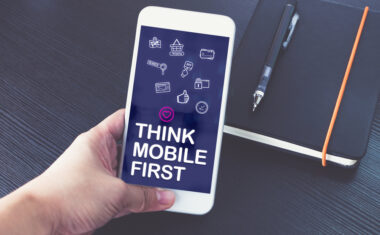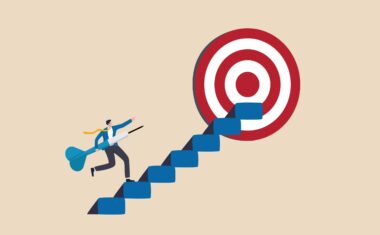What Is UX Design? A Guide for Beginners in 2023
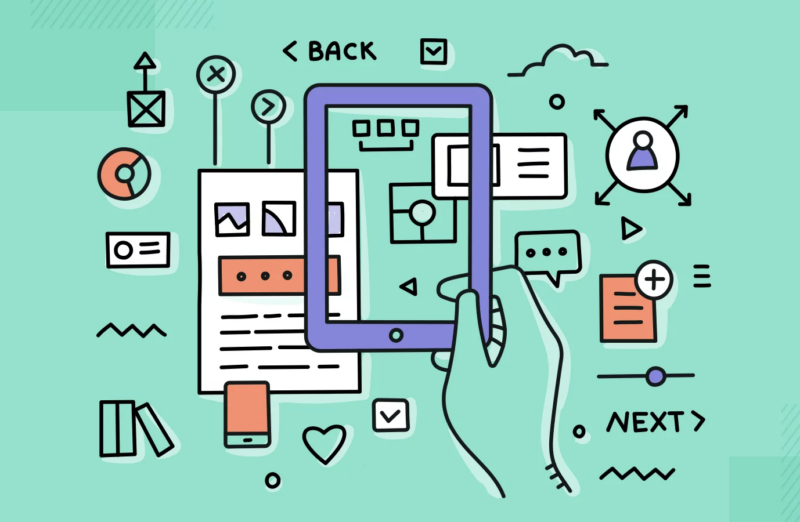
In this article
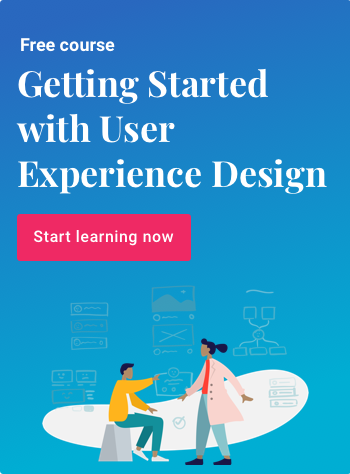
Today, Zoom is more than a digital product—it’s a verb. But how did Zoom beat out the competition to become singularly synonymous with video conferencing?
The answer lies in its user interface, or as those in the tech world call it, UX design.
When asked about the success of Zoom, Jason Fried, CEO of Basecamp, explained that, “It was just simply way easier.” Sharing a link to a Zoom meeting is as simple as sharing a link to an article, and invitees don’t need to log in or download software to join meetings. Thanks to its user-friendly UX design, Zoom now dominates the video chat market.
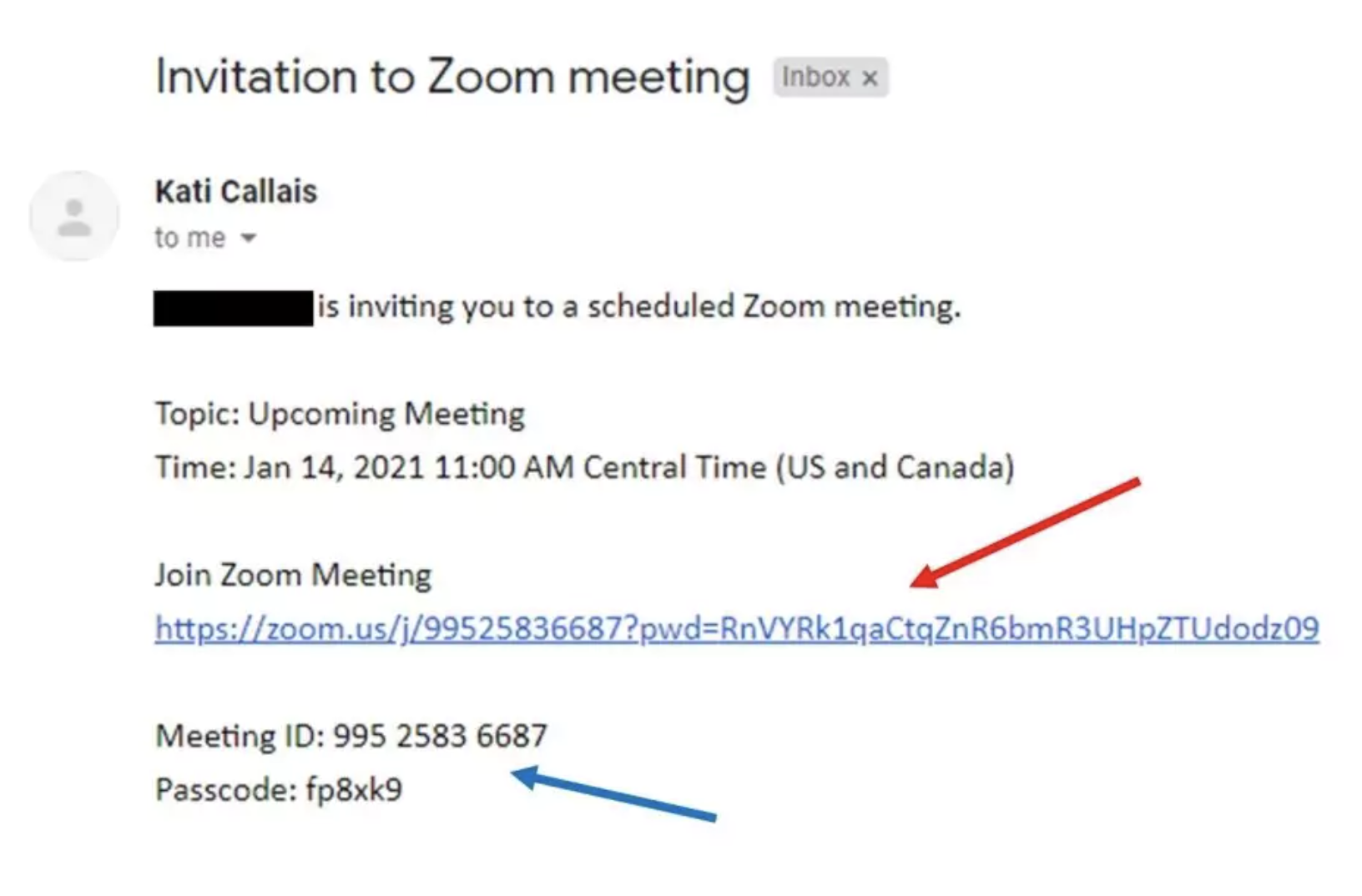
Want to follow in Zoom’s footsteps and learn more about UX design and how it can help your organization? Then let’s dive in.
What Does UX Design Mean?
User experience design, or UX design, encompasses the ways in which people engage with products. UX design is the process of creating a positive user experience that meets a user’s needs. Effective UX design enables users to achieve their goals easily, efficiently, and with minimal friction.
The Role of UX Design
Read on to learn more about the social impacts and business value of UX design.
Why Is UX Design Important?
UX design shapes how people interact with the world and determines the accessibility of a product. Great UX allows users of all skill levels and backgrounds to successfully navigate a product.
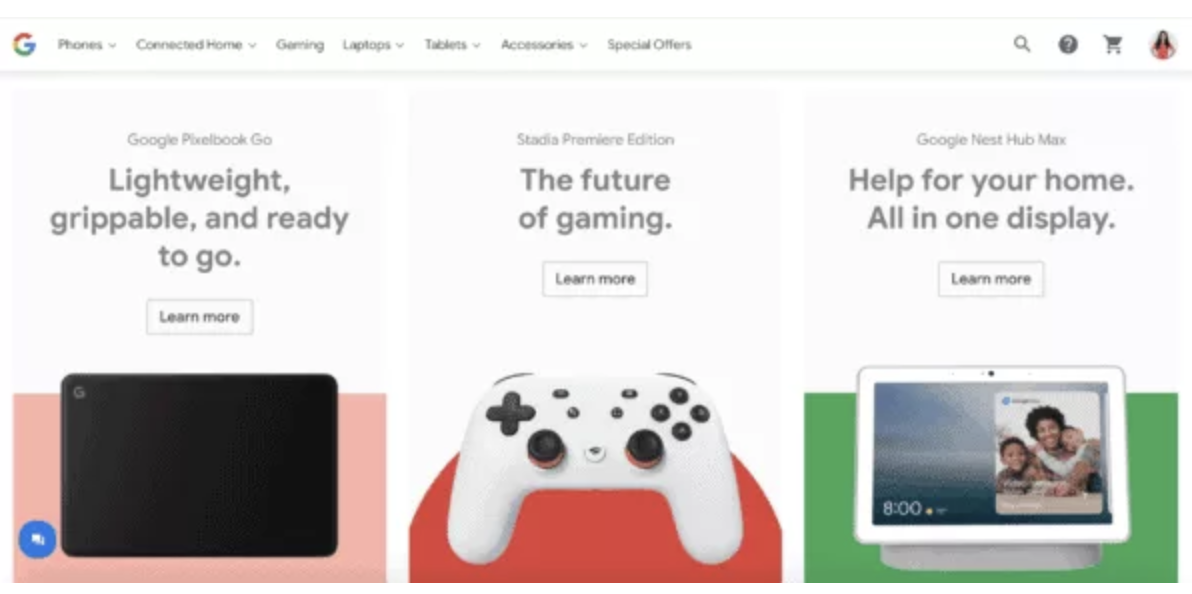
UX design is also vital to product success. Strong UX design attracts and retains loyal customers while encouraging product evangelism. Additionally, the UX design process extracts key customer insights. This information can help companies develop customer journeys and products that maximize conversion rates and customer satisfaction. Effective UX design can also minimize costs related to product development, support, and maintenance.
What Is the Goal of UX Design?
UX design strives to create products that seamlessly meet user needs. Core UX design goals include:
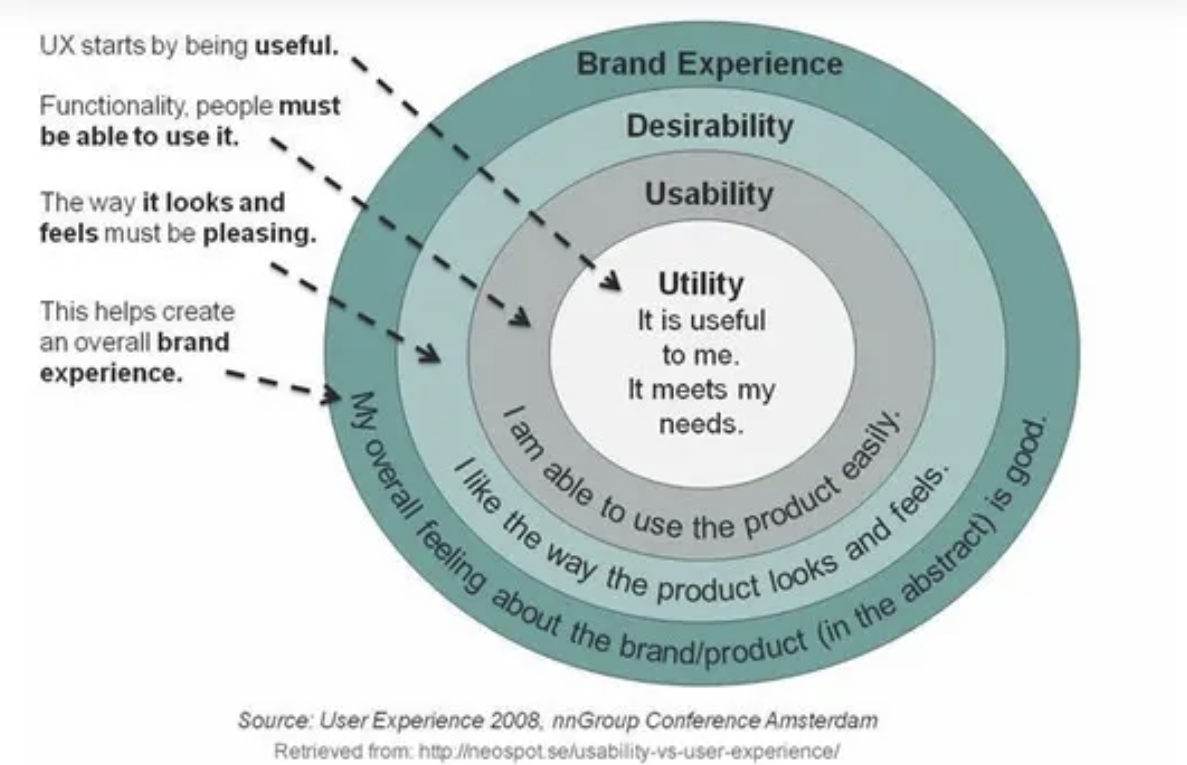
- Usability. Products should be simple, intuitive, and easy to use. Solutions to common user problems should be familiar and accessible.
- Usefulness. Products should meet real user needs.
- Accessibility: Products should be designed for universal use. Inclusive features should cater to users of diverse skill levels, abilities, and backgrounds.
- User delight. Product use should generate positive emotions. Product interfaces should be aesthetically pleasing and fun to use.
To accomplish these goals, UX design works to understand user needs, desires, expectations, and pain points.
Get To Know Other Design Students
Valena Del Valle
Junior Product Designer at The Hartford
Natalie Breuner
UX Designer And Researcher at Magoosh
Bonnie Sweet
Product Designer at Giide
What Are the Steps of UX Design?
UX design is a multi-stage, iterative process by which designers create products that align business and user goals. Let’s break down what that process looks like:
Stakeholder Interviews
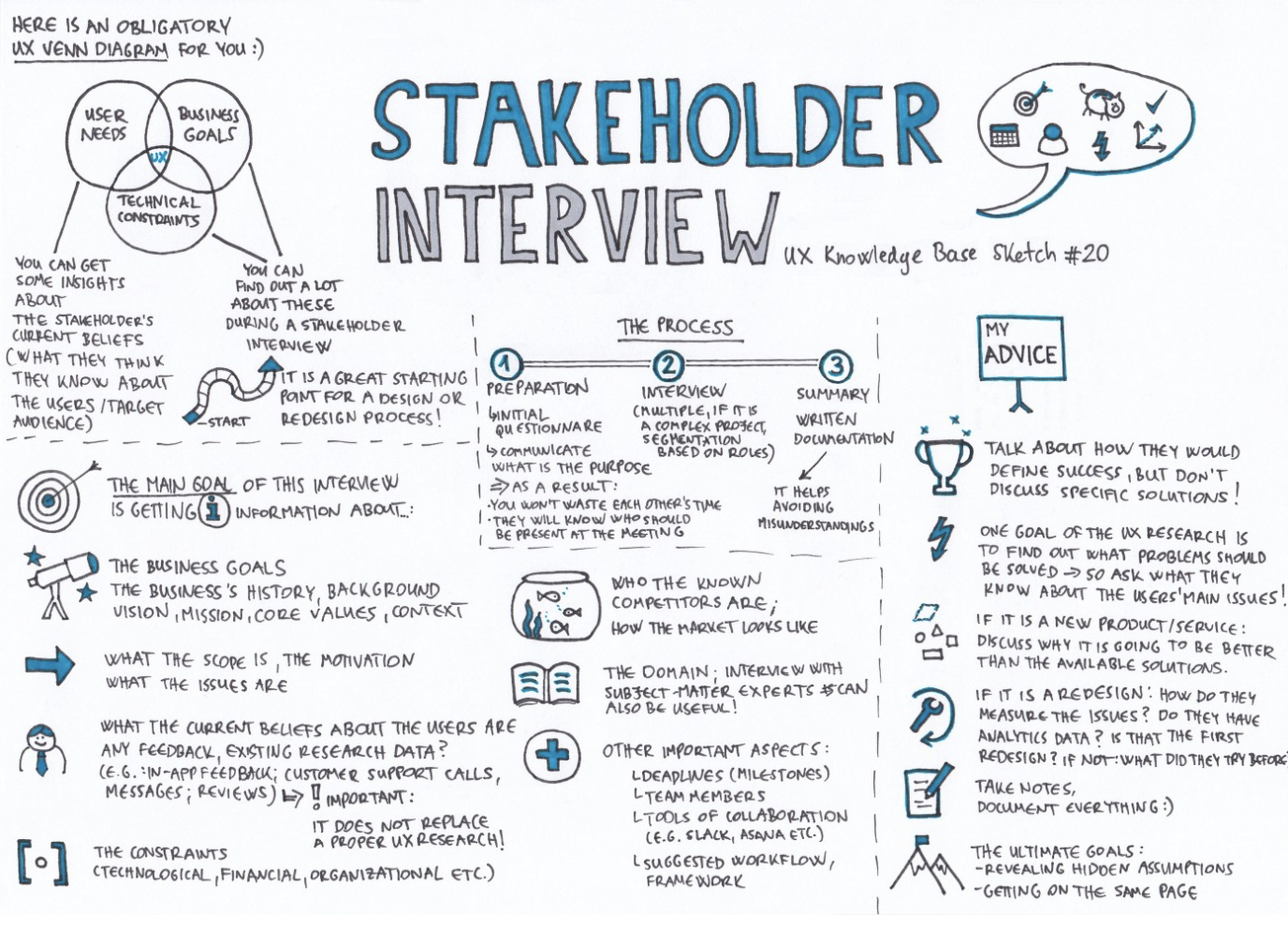
This preliminary step seeks to establish a foundational vision for the product. Through conversations with investors, project managers, and other parties with a stake in the success of the product, design teams work to determine business goals, technical limitations, and user needs. This stage focuses on defining the product’s target audience, as well as the criteria for product success.
User Research
Effective UX design requires a thorough understanding of user needs, pain points, and behaviors. User research helps designers empathize with how users experience a product. It also allows designers to validate or disprove assumptions about users and make informed design decisions.

Through qualitative and quantitative UX research methods, UX designers explore the motivations and attitudes of their target audience and construct segmented user personas, which help designers personalize products to meet unique user needs.
UX Audit and Competitor Research
A UX audit identifies existing features that confuse users, impede user journey progress, or prevent users from accomplishing a goal. To identify these sites of friction, UX designers review a product’s usability heuristics as well as the analytics data that identifies conversion and abandonment hotspots within a product’s user flow.

User experience designers also analyze competitor products to gather insights about what works and what doesn’t. Competitor research can also identify market gaps in which a new product could serve an unmet need.
Wireframing and Architecture Planning
Wireframes are outlines of a product’s basic framework, drawn by hand or sketched digitally with design software. Wireframes lack color, text, and graphic design elements. They serve as blueprints that communicate the layout of a product’s interface and information architecture.
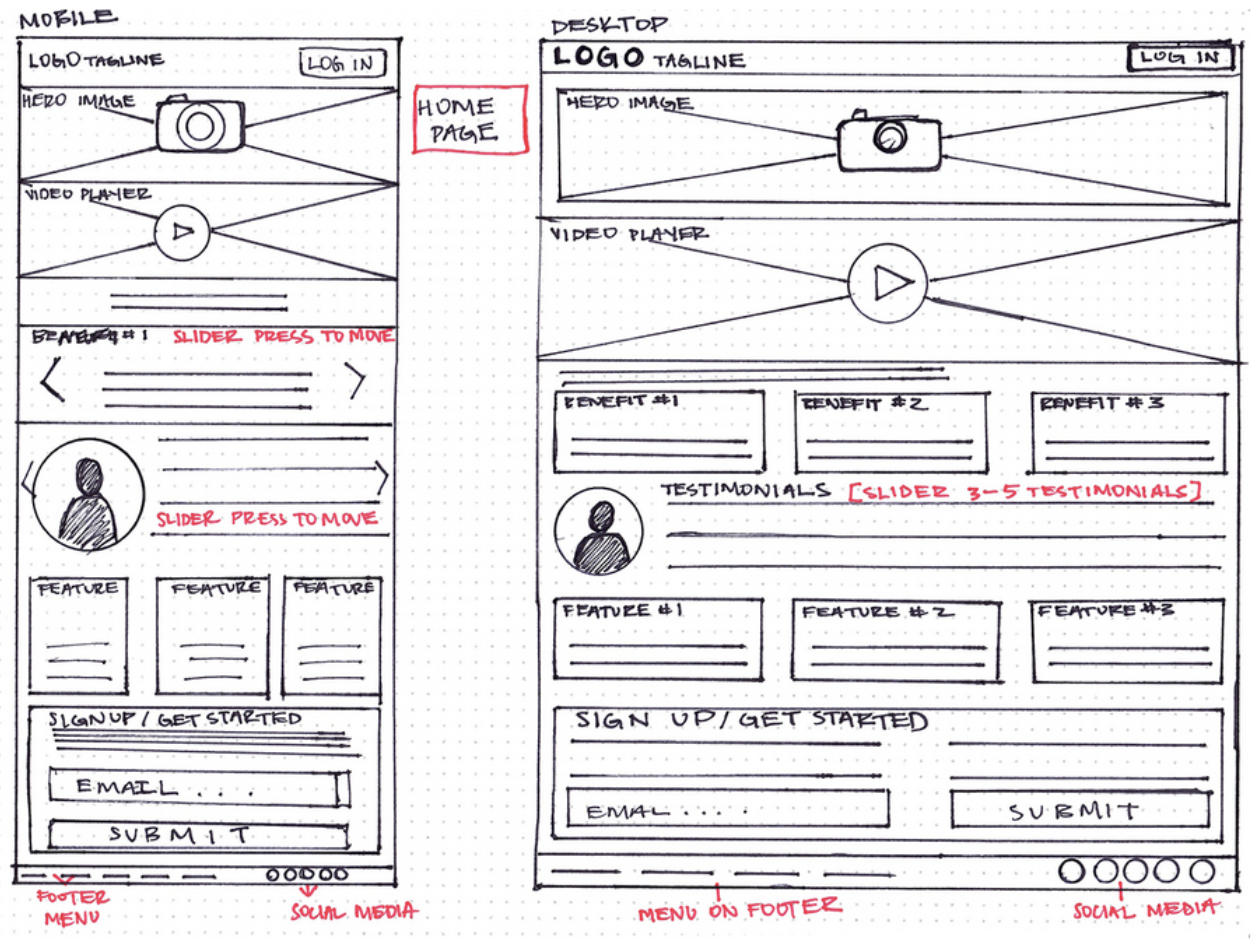
Architecture planning strives to optimize the structure of a product and the organization of its information. Robust information architecture helps users discover information, navigate the product, and complete tasks.
Design a Prototype
Prototypes are high-fidelity simulations of a final product that include clickable links and interactive UI elements. UX designers test prototypes to evaluate how users interact with a product and gather information about whether the product effectively meets user needs. Prototypes are created with software tools like InVision, Sketch, and Adobe XD.
Usability Testing
UX designers test prototypes to identify and eliminate sites of friction before production begins. Usability testing helps designers assess a product’s usability, accessibility, and usefulness. The results of user testing serve to validate design decisions.
Moderated user testing is facilitated by professionals who interact with participants in real-time. This type of testing provides in-depth, qualitative information about how users interact with a product. Unmoderated usability testing allows users to test the product in their own environment without supervision, and is typically used to validate a specific hypothesis on a large segment of users.
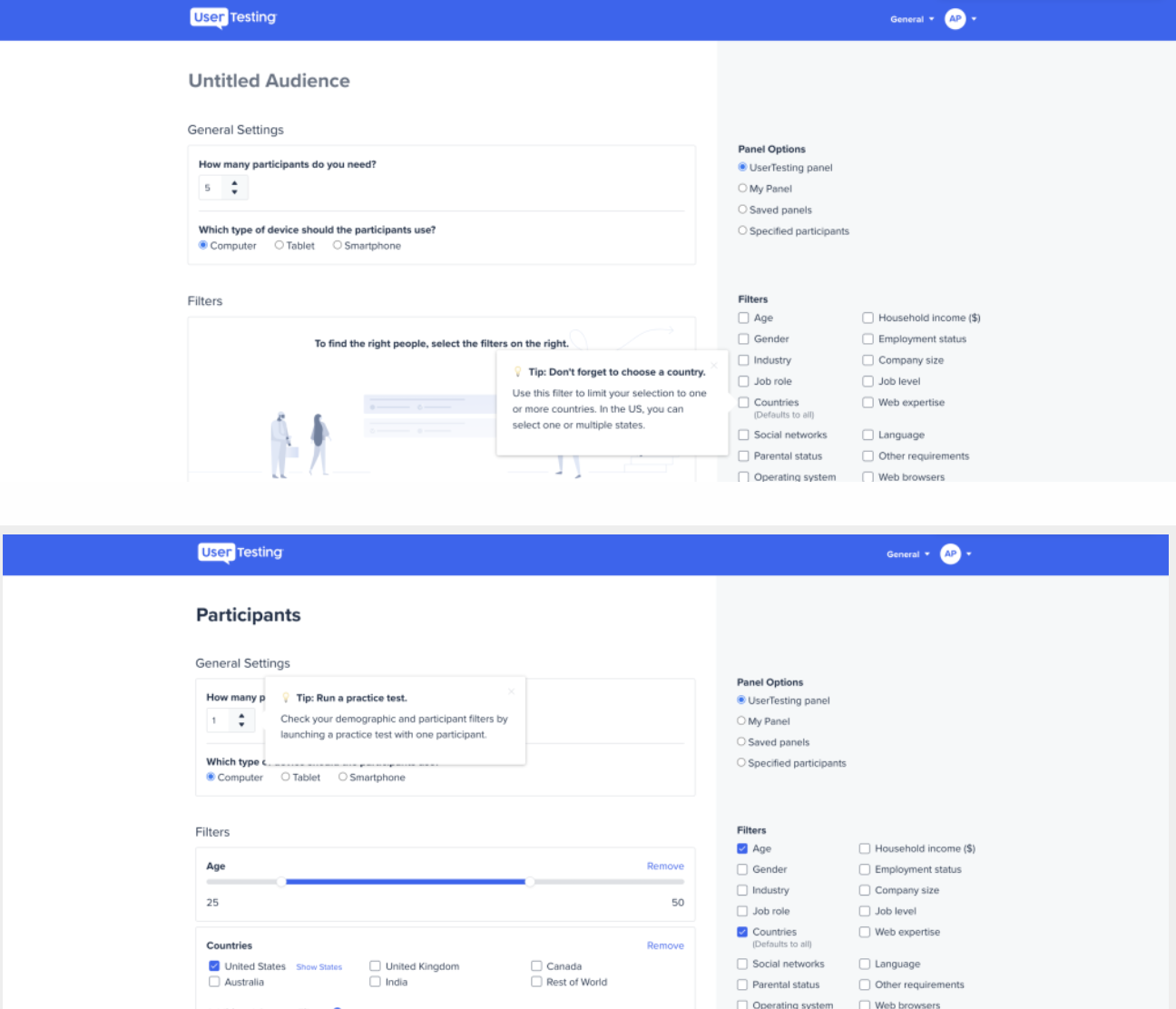
Interpret
To identify problems with a product and understand why they occur, UX designers evaluate and analyze quantitative and qualitative user testing results. Quantitative data—such as success and error rates, or time required to complete a task—can pinpoint sources of friction. Qualitative data can reveal the cause of friction. Designers typically search for patterns in data to find recurring problems.
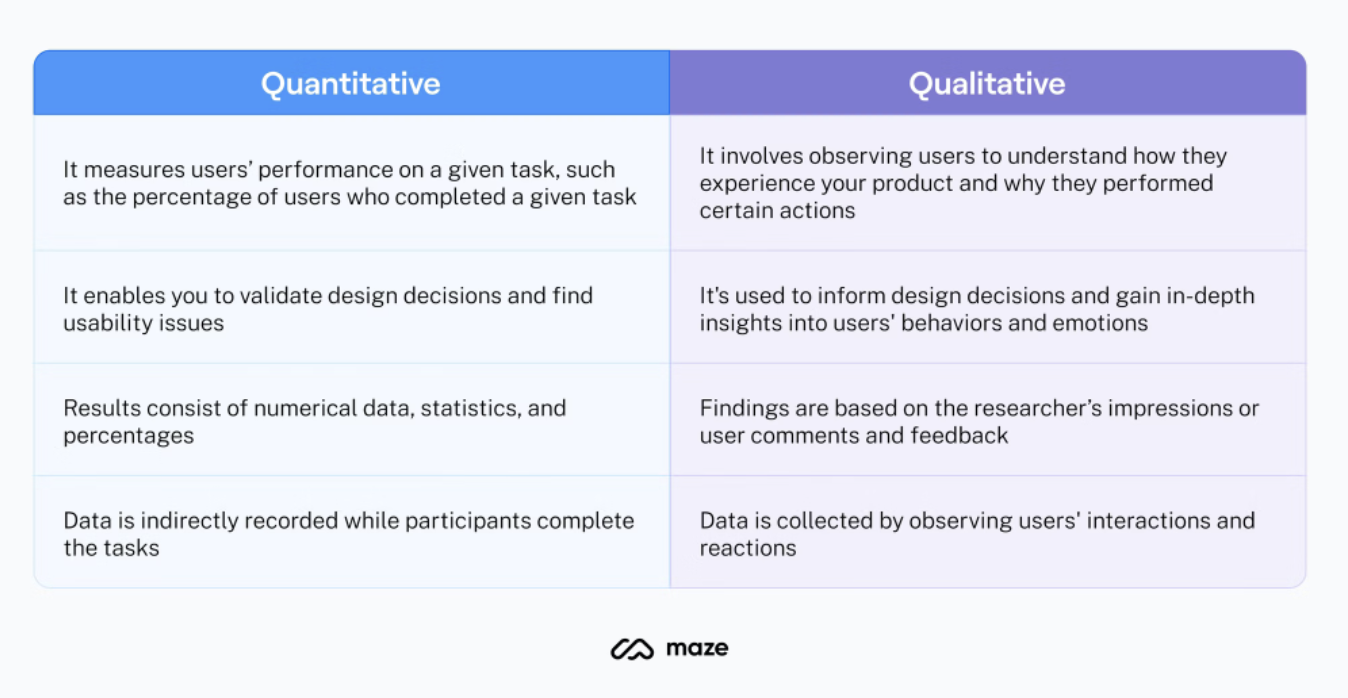
Improve
After identifying and analyzing usability issues, it’s time to iterate. Typically, designers brainstorm multiple solutions for each problem with the goal of shifting user behavior. After implementing these solutions, designers evaluate their efficacy through additional rounds of usability testing—a process of refinement that continues until all issues with the product are solved.
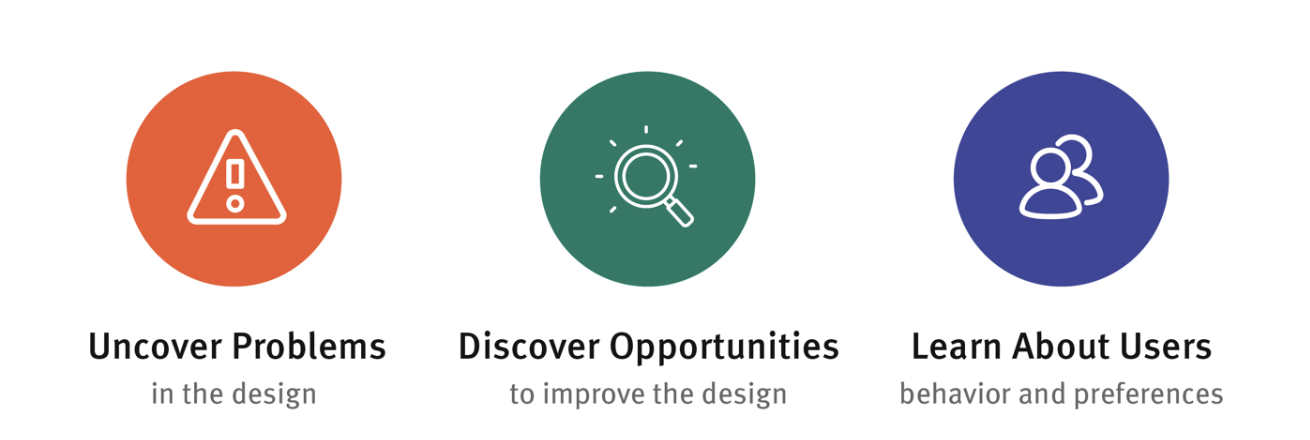
What Are Some Good Examples of UX Design?
UX design should be fun, compelling, and user-friendly. Examples of good UX design include:
Duolingo
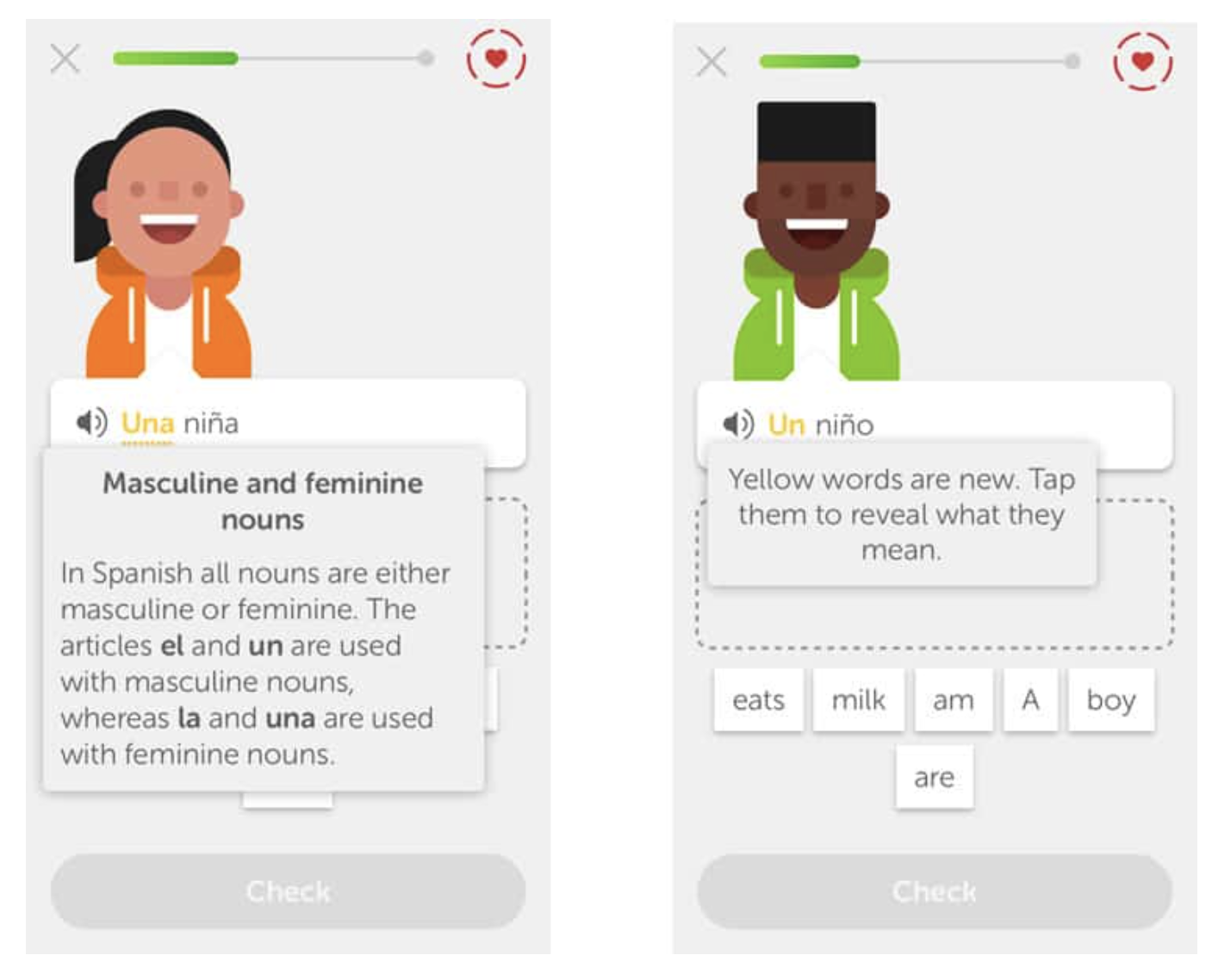
This language-learning app excels at gamification—a UX design technique whereby elements of gameplay are infused into products to boost engagement. With gamified features like animations, points, levels, badges, winning streaks, and more, Duolingo turns the often-frustrating process of learning a new language into a fun, addictive experience.
Spotify Wrapped
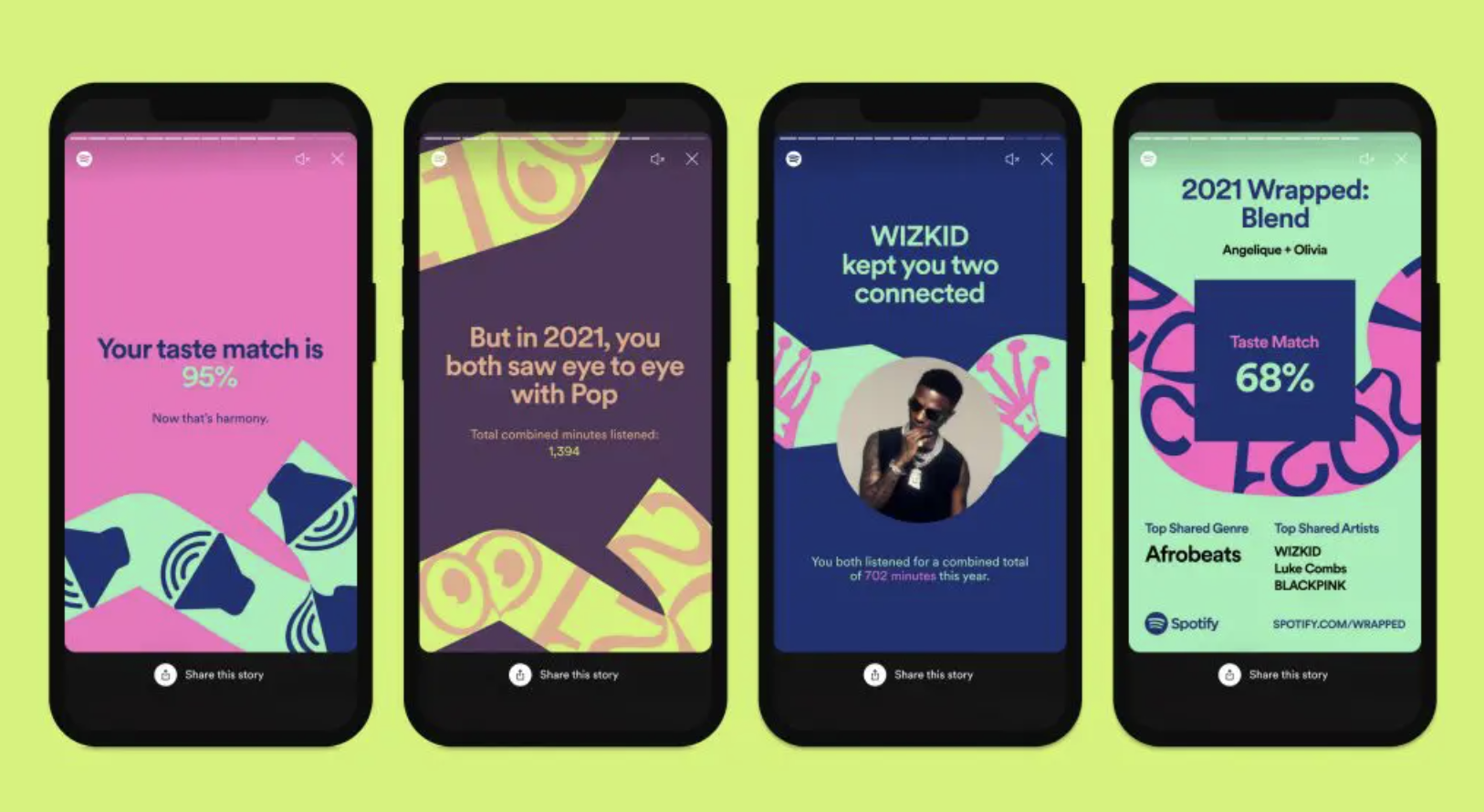
The audio streaming behemoth’s year-in-review snapshots summarize each Spotify user’s streaming behavior over the course of the preceding 11 months. Spotify releases these behavior summaries in a shareable story format—rewarding users for their engagement with personalized, valuable content in a familiar schema popularized by social media platforms. Spotify Wrapped also offers a new way for users to share information about themselves and connect with others.
Is UX Design Different From UI Design?
UI (user interface) design is a subset of UX design, and refers specifically to the formatting of a product’s surface layer, or interface. UI design encompasses the elements that users interact with when engaging with a product—including interactive elements like buttons and visual elements like color, layout, and images. User experience designers consider UI elements as well as the overall function and structure of a product.
The Role of UX Designers
Wondering how user experience designers contribute to product development? Let’s explore the responsibilities of UX designers.
What Does a UX Designer Do?
UX designers construct conditions of interaction that facilitate a positive experience for users when engaging with a product. The role of a UX designer is to render products useful, usable, and delightful. To do so, designers conduct research and create user personas before wireframing, prototyping, testing, and refining a product’s design.
What Are the Stages of UX for Designers?

UX design is an iterative process guided by a concept known as design thinking. This solution-oriented approach to problem-solving helps designers understand and empathize with users. Design thinking encourages designers to question and validate assumptions about users, problems, and solutions. It is an ongoing cycle of experimentation, testing, and refinement that emphasizes user-centered design.
Related Read: The 5 Stages in the Design Thinking Process
Let’s take a look at the stages of a typical UX design process.
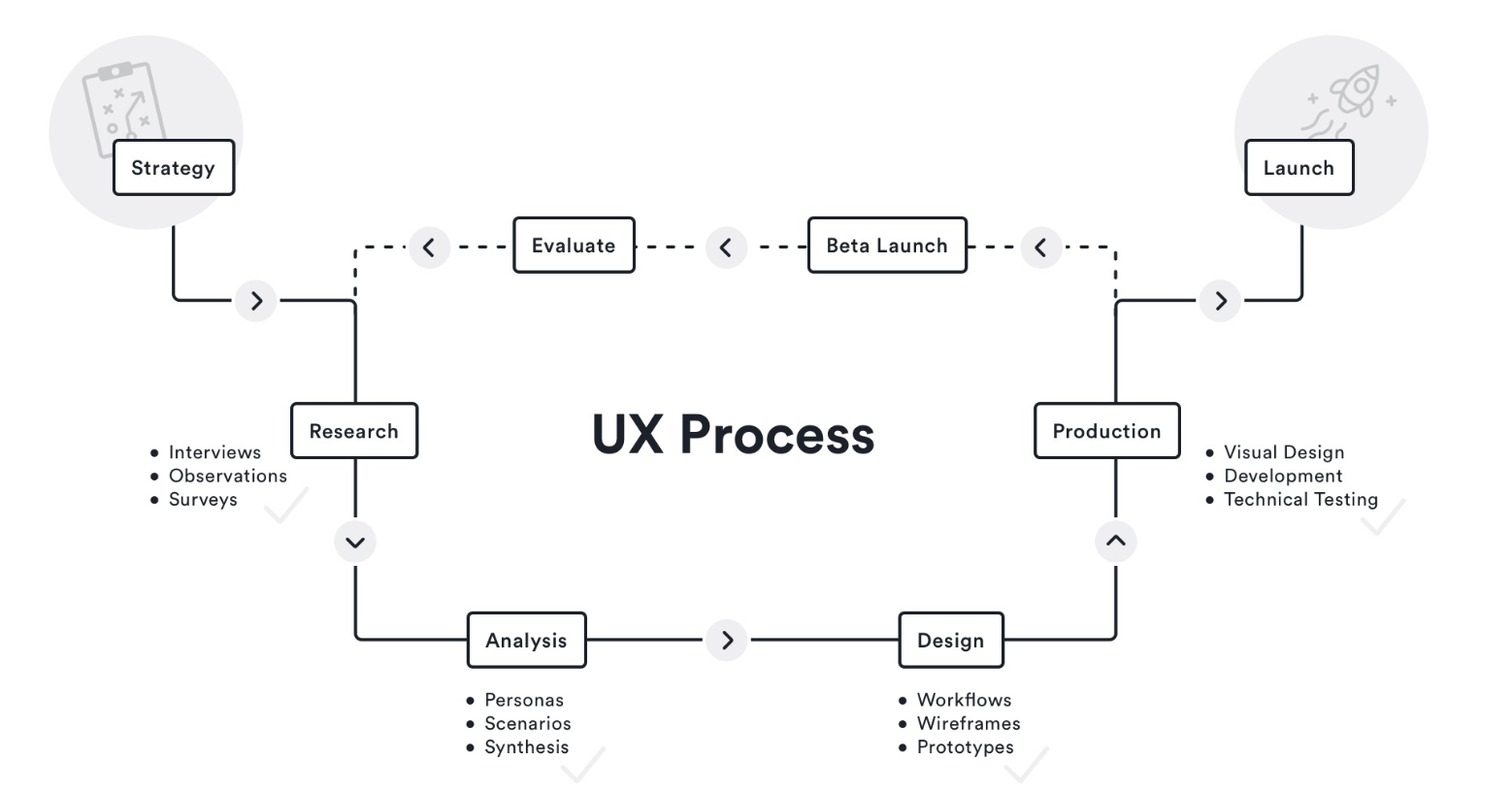
Define
Before creating a product, designers strive to understand the context in which the product will exist. What need will the product meet? Who will use the product, and why? When and where will the product be used? The answers to these questions are used to generate a value proposition map that explains the product, its purpose, and its audience. In the definition stage of the design process, UX designers collaborate with stakeholders to brainstorm a product concept. Stakeholder interviews produce insights about business goals, which designers must align with user needs.
Ultimately, the definition stage of product development yields a high-level outline delineating the purpose of the product, the structure of the product development team, the channels of communication the team will use, and a summary of stakeholder expectations including KPIs to measure the product’s success. During this stage of product definition, designers may also draft early mockups by hand to communicate their concept.
Research
UX designers conduct qualitative and quantitative research to better understand the behaviors, motivations, attitudes, and desires of users. Qualitative user research reveals the opinions and experiences of users, while quantitative research explains the statistical significance of those experiences. Qualitative data answers questions like, “why are users struggling to complete tasks?” while quantitative research measures the scale of a problem, answering questions like “how many users are struggling to complete tasks?”
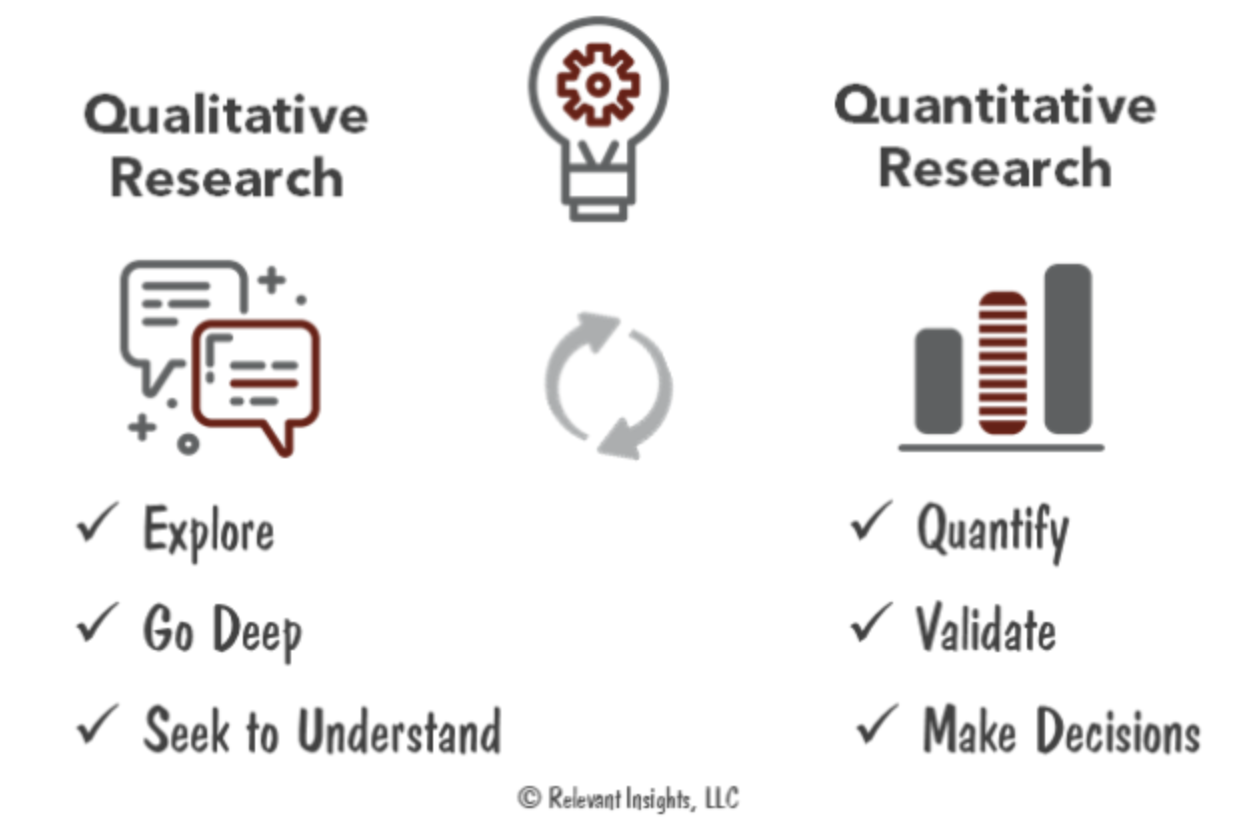
Analyze
Designers harness insights from user research to develop user personas. These semi-fictional profiles summarize the goals, needs, background, knowledge, and attitude of unique segments of a product’s target audience. User personas guide design decisions and help designers understand the psychology of the people who will use their product. Designers use qualitative research methods like interviews, focus groups, surveys, diary studies, and card sorting to gather information about users.
Once designers pinpoint what users want, need, think, and feel, they must determine what motivates these desires, thoughts, and emotions. This analysis validates the design team’s assumptions about users and informs user stories, which are tools that designers use to understand product interactions from a user’s point of view.
Design
After the goals and function of the product are succinctly defined through user research, designers create wireframes to outline the product’s basic structure. These architectural blueprints visualize the product’s key elements and communicate how they work together.
Prototyping focuses on interaction design. Low-fidelity prototypes—which can manifest as simple, clickable wireframes—emphasize ideation over execution when it comes to technical details. These prototypes demonstrate the core functionality and information architecture of a product, as well as user flow between screens. They also define the fundamental layout of a product’s UI, such as sizing, spacing, and positioning of key UI elements.
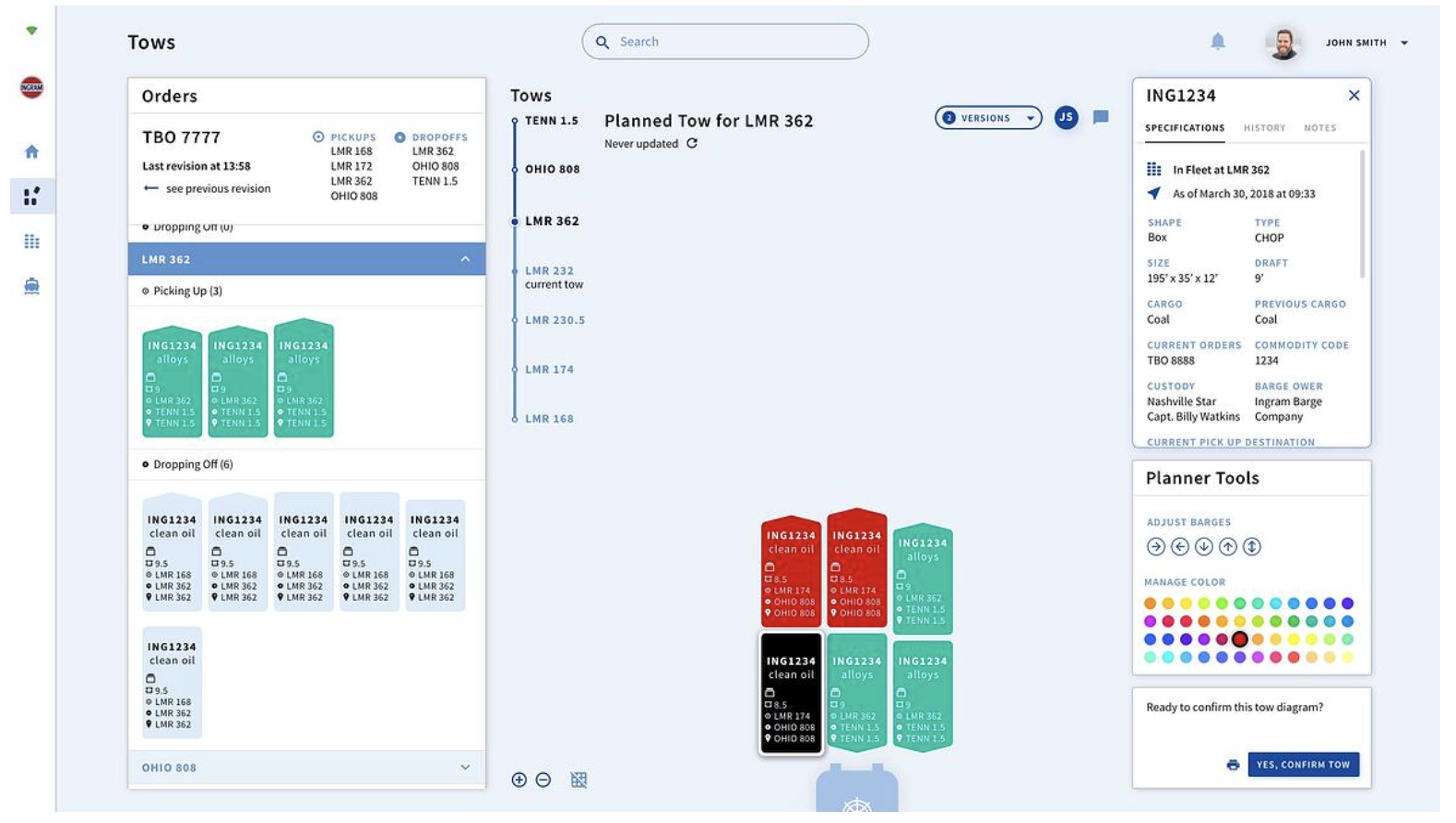
High-fidelity prototypes integrate advanced UI design elements—think typography, images, color gradients, animations, and more. As highly-functional simulations of the end product, high-fidelity prototypes also feature advanced interactive elements like scrolling, accordion menus, drag, and drop features, and more.
Validate
After developing a high-fidelity prototype, design decisions are validated through usability testing. Through moderated and unmoderated usability testing, designers can evaluate the success or fail rate of various features, functionalities, and tasks. Results can identify design flaws or sites of friction and reveal how users experience a product. Designers use focus groups, A/B testing, surveys, analytics, and other methodologies to conduct usability testing. Feedback and data gleaned from usability testing informs subsequent iterations of the design.
Popular UX Tools to Know
UX design programs help designers visualize and test their ideas. A designer’s choice of tool will depend on budget, collaborative needs, and the desired level of fidelity and functionality. Top design tools include:
Sketch
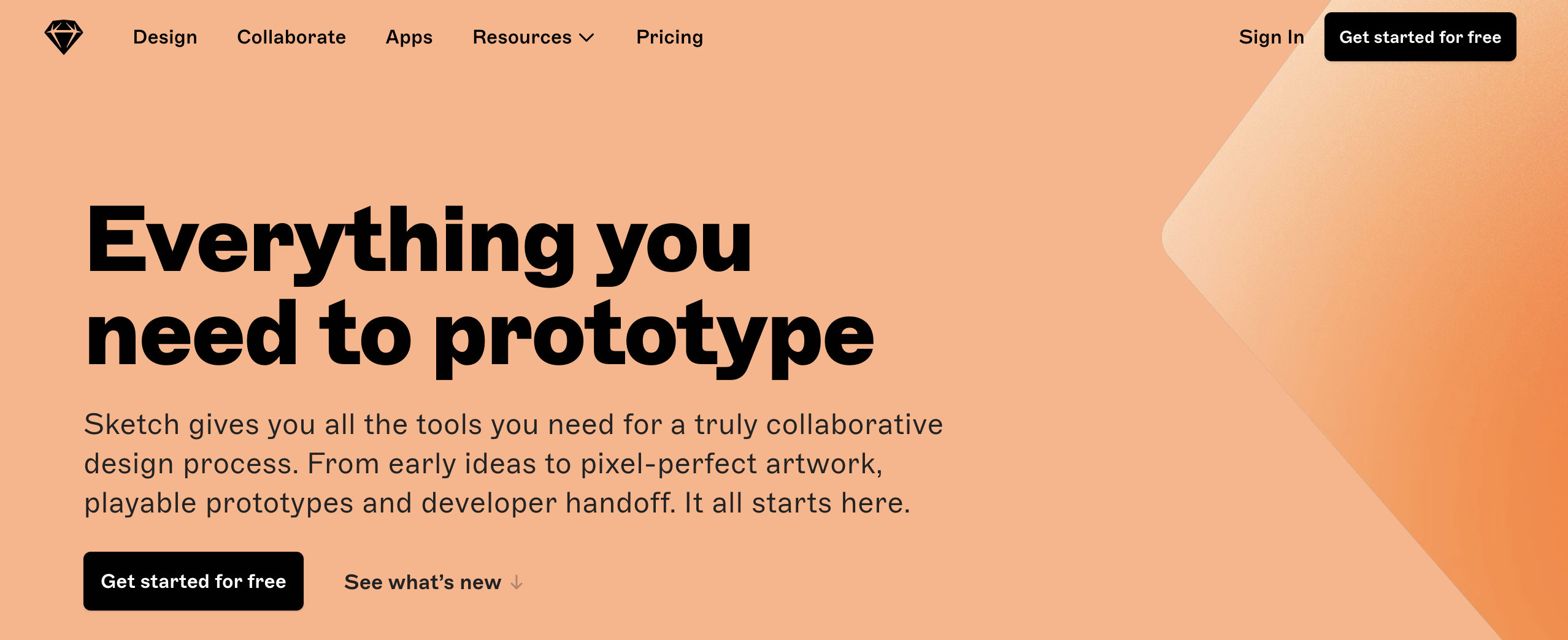
This collaborative, vector-based design software is typically used to design websites and mobile apps. Sketch offers a wide range of plugins and assets, and its user-friendly interface is highly accessible to fledgling designers. Sketch is often used to quickly mock up wireframes and user flows.
Figma
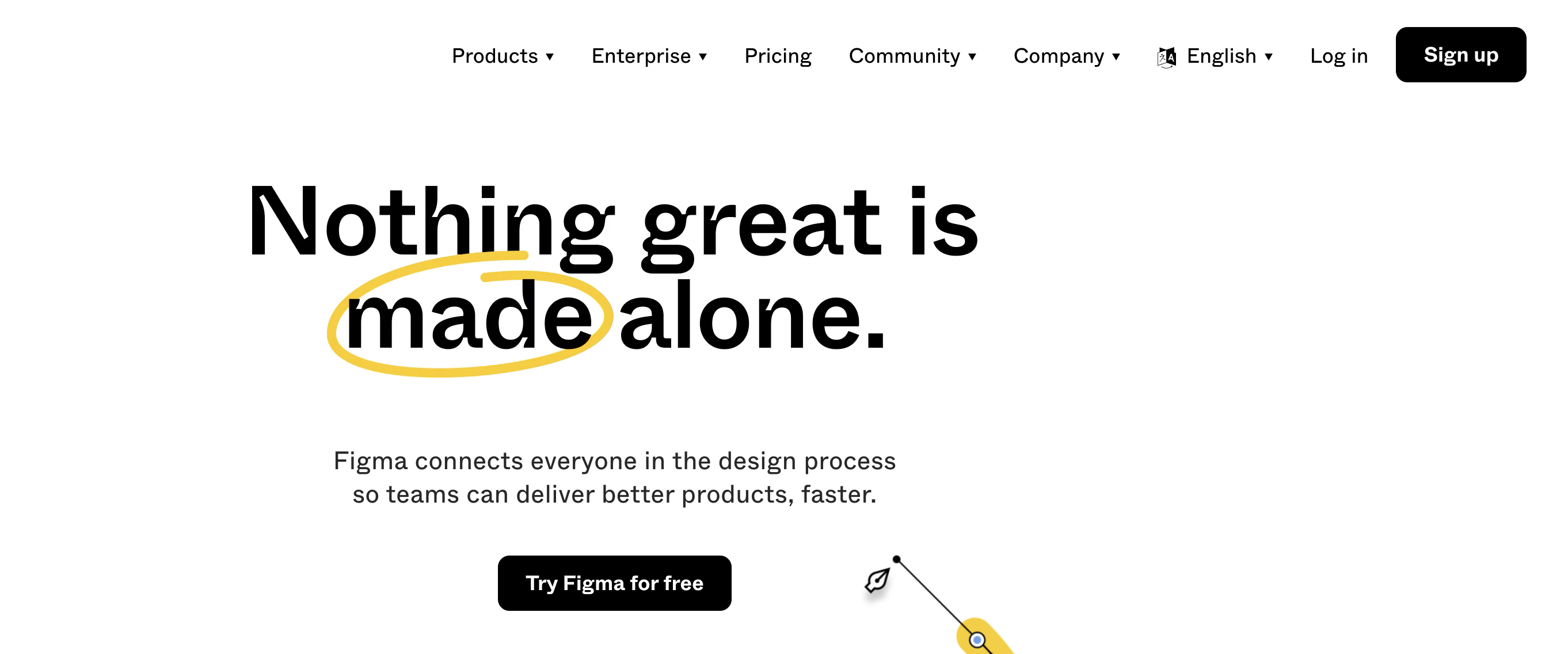
This easy-to-use collaborative tool includes a drag-and-drop editor that supports wireframe fabrication, animations, and various prototype elements. Figma is a web-based tool with a native app that enables offline functionality. It also features a free tier that includes tutorials that guide beginners through the app.
InVision

InVision is a cloud-based tool that allows designers to import static screens from Sketch and Photoshop and convert them into dynamic prototypes. The program also allows designers to create low and medium-fidelity prototypes. InVision is popular with design professionals, especially within large companies. A free-tier with limited functionality is also available to introduce early-career designers to the platform’s technology.
Adobe XD
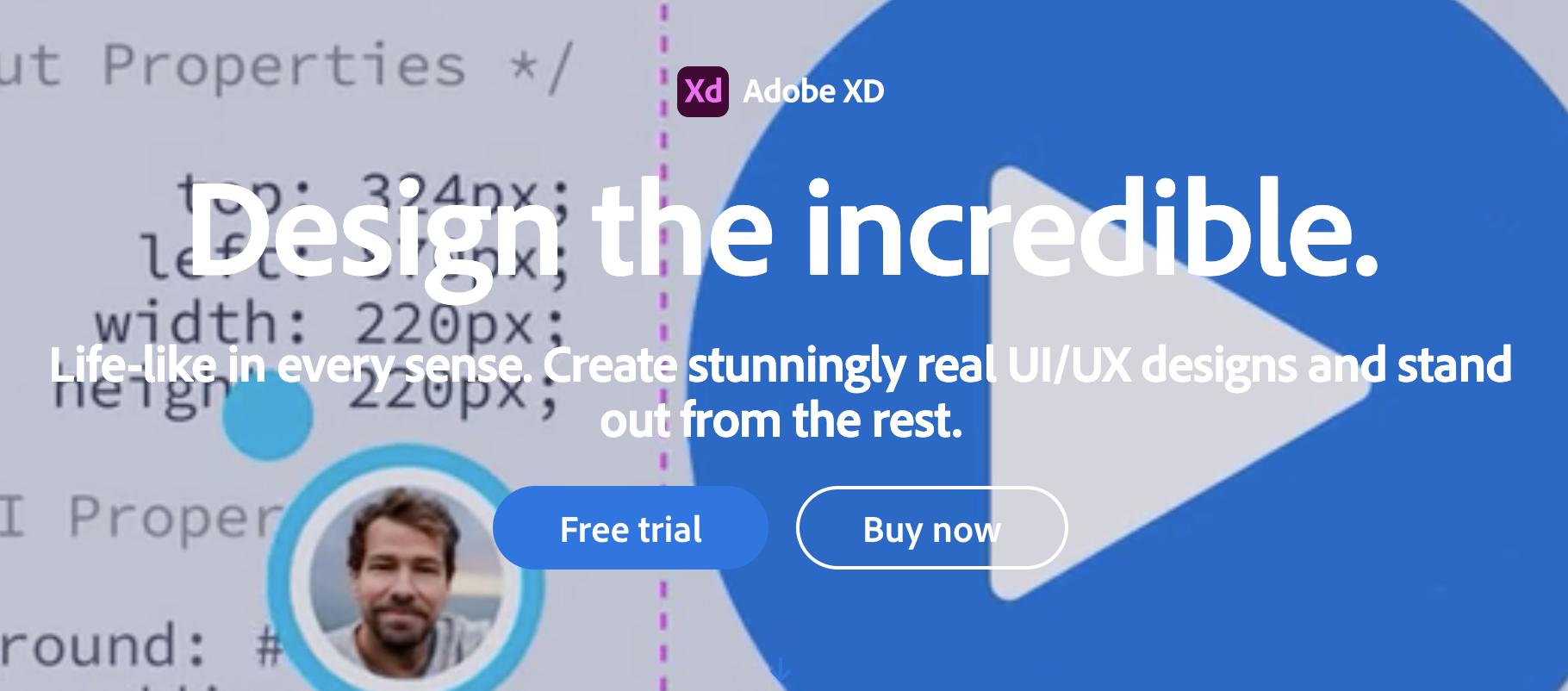
This powerful vector-based tool is supported by Mac and Windows ecosystems, and can be used to build wireframes, mockups, and prototypes for web and mobile apps. It is compatible with Illustrator, Photoshop, and other products in the Adobe suite, enabling the creation of highly customizable UI elements. The tool is fast, stable, and user-friendly—and is favored by larger companies for these reasons.
What Does a Career in UX Look Like?
The UX field offers ample opportunity for professional advancement, but your unique UX career path will depend on your skills, interests, and goals. Common UX career tracks include:
- The managerial track. With enough experience, you’ll find opportunities to lead projects and teams before progressing into a formal management role. UX managers typically manage workers, budgets, and project timelines. This career track can eventually lead to executive appointments.
- The subject matter expert track. As you develop technical expertise, you’ll be able to advance to a senior role without managing other workers. This path suits designers who wish to focus on honing their craft and carry out design work on a daily basis. This track can lead to roles like “Principal Designer.”
- The freelance career track. With a strong network of clients, you’ll be able to work as a freelance UX designer—but prepare to take on the challenge of generating new business.
- The niche career track. The evolution of UX has created abundant opportunities for specialization within the field. UX research, for example, has emerged as a field unto itself—an excellent specialization for those who are passionate about user behavior patterns and the psychological aspects of UX design.
UX Design FAQs
Want to know more? Read on for answers to frequently asked questions about UX design.
Is UX Design Coding?
UX design does not require coding skills. Programming is left to software developers who build products according to design specifications. Nevertheless, rudimentary coding skills can open up job opportunities and enhance the quality of your designs. Basic programming knowledge helps designers understand the capabilities of a product based on coding limitations—and enhances communication and collaboration with developers.
Is UX Design Hard To Learn?
With help from a UX design bootcamp, you can learn UX design in just six months. Through design projects and career-focused coursework, you’ll build hands-on experience and learn to ideate, research, sketch, wireframe, and prototype using top UX tools. You’ll also build skills in competitive research, user research, product testing, and user interface design.
To accelerate your career shift into UX design, you’ll be matched with a real company to complete a 40-hour industry design project that solves an actual business problem. With guidance from regular one-to-one meetings with your industry expert mentor, you’ll also build a professional portfolio that showcases job-ready skills.
While it’s possible to build some UX design skills on your own, the UX design learning curve takes much longer to navigate independently. In addition to a professional certificate that validates your skills and knowledge, a bootcamp program provides access to career resources that can help you hone the soft skills you need to get hired.
Is UX Design a Good Career?
UX designers report high levels of job satisfaction. Studies show that UX designers enjoy the process of their work and find reward in seeing the impacts of their designs. UX designers may occupy generalist roles or specialize in specific areas like UX research, UX writing, or product design.
Because product experiences determine product success, demand for UX designers is on the rise. UX also factors into a website’s search engine results page (SERP) ranking—meaning marketing departments rely on UX design to build a competitive search engine optimization (SEO) strategy.
According to the U.S. Bureau of Labor Statistics, job opportunities for UX designers are projected to increase 13% between 2020 and 2030—a faster than average growth rate.
UX design is a high confidence job, and designers bring home an average annual salary of $115,743.
Since you’re here…
Are you a future UX designer? Enroll in our UI/UX Bootcamp and join over 10,000 students who have successfully changed careers with us. Want to get wireframing right this second? Check out our free UX learning path today.




